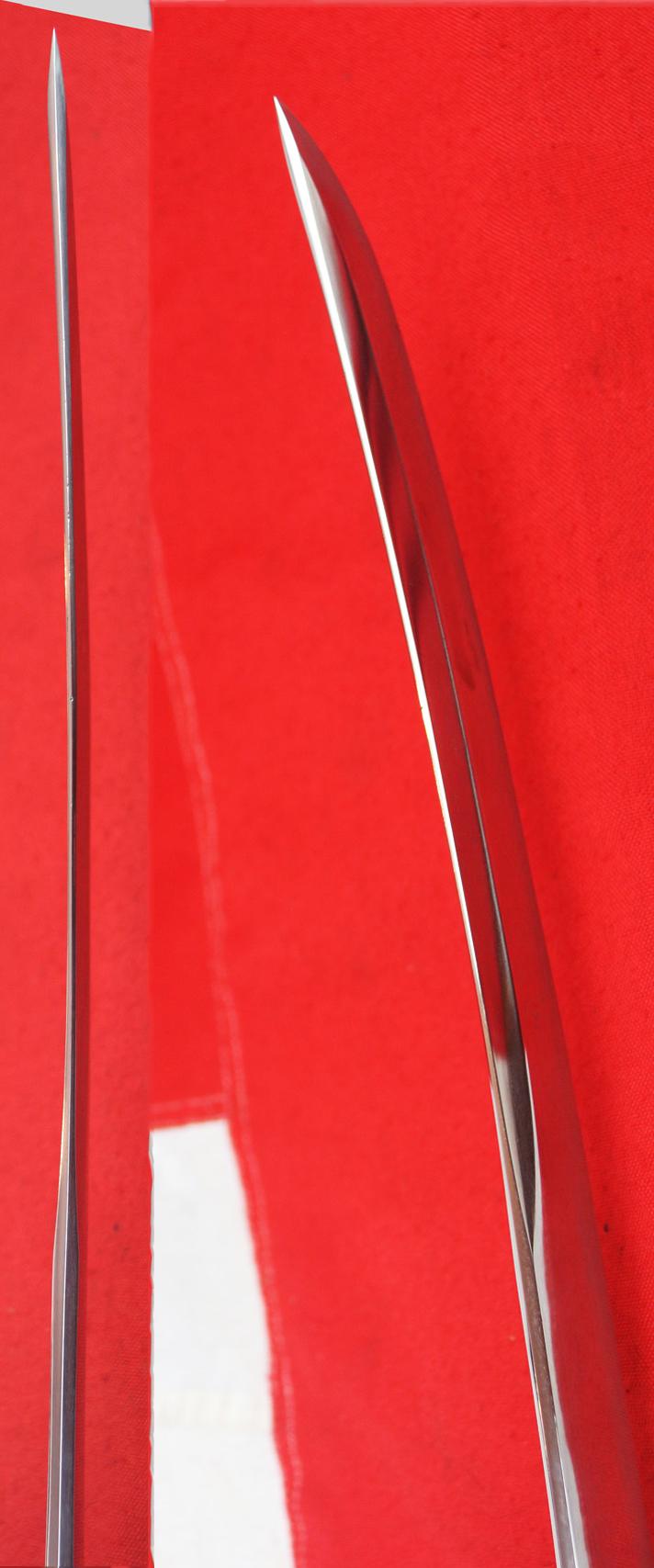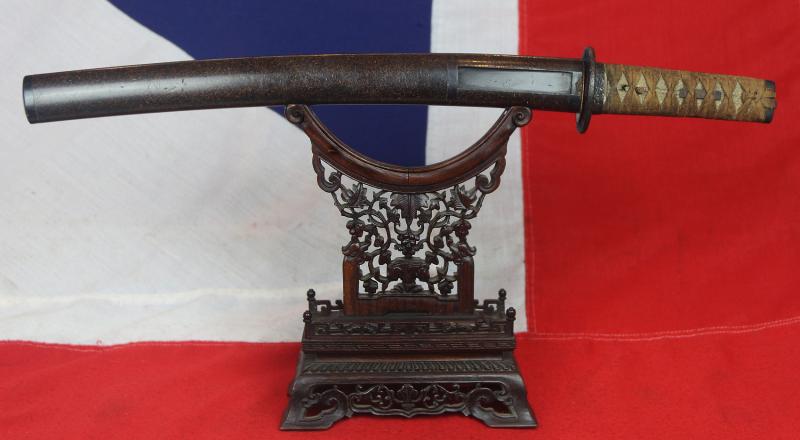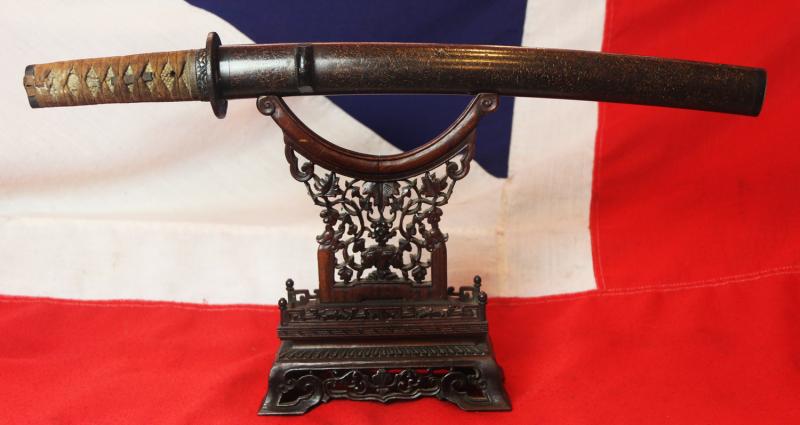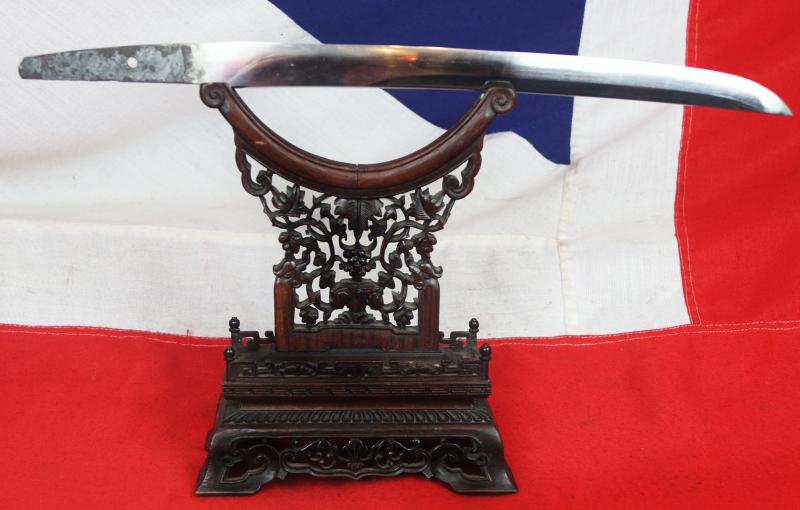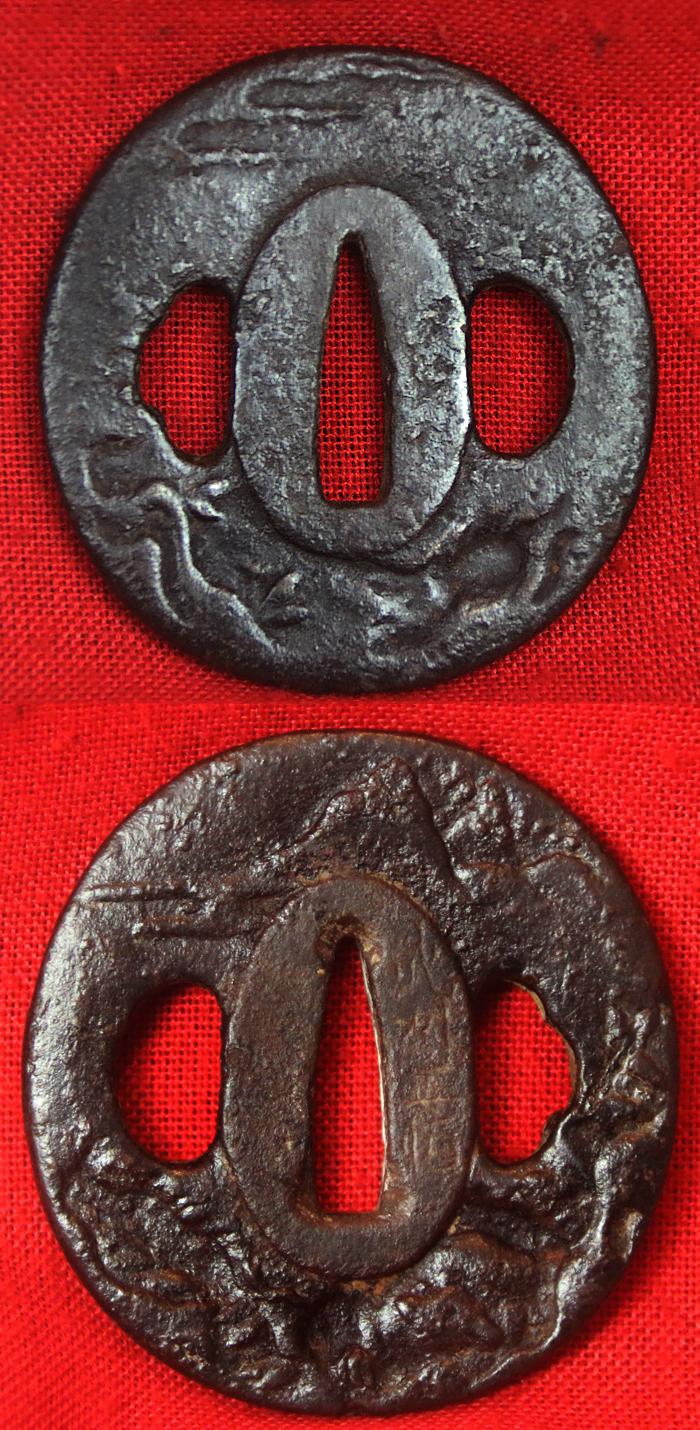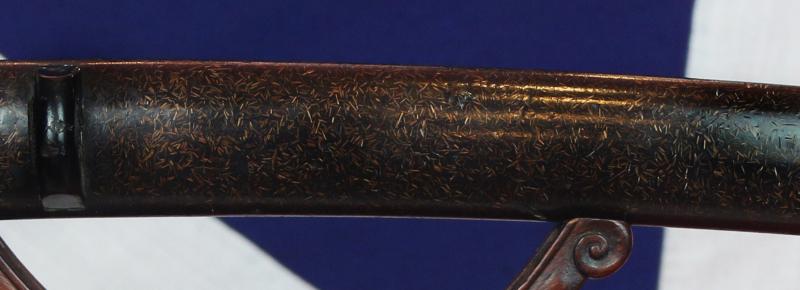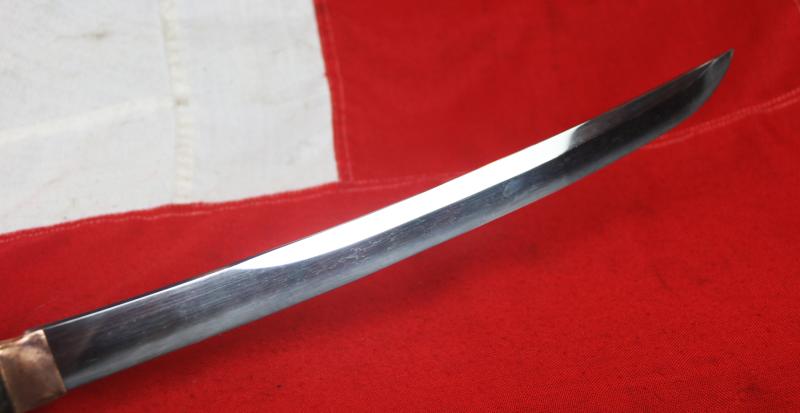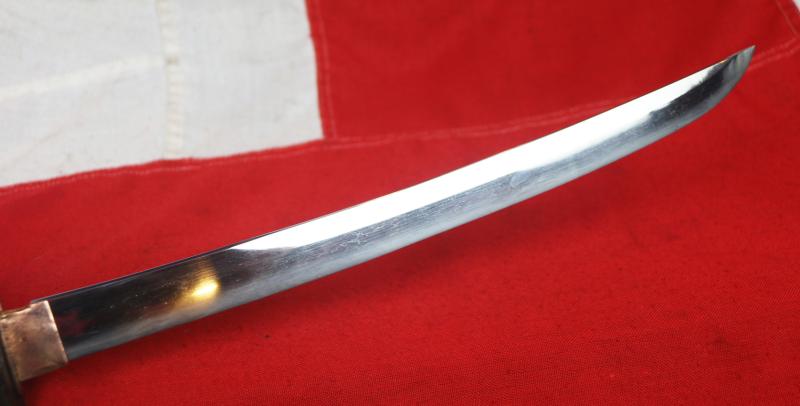A Superb Antique, Shinto Era, Unokubi (鵜首) Zukuri Blade Tantō, Late 16th To Early 17th Century, from the Battle of Sekigahara, Shinjitai: 関ヶ原の戦い; Kyūjitai: 關ヶ原の戰い
Completely untouched in 150 years, and fitted with all its original Edo period koshirae Including a superb stunning urushi lacquer 'pine needle' decor saya with buffalo horn fittings, {kurigata, sayajiri}. Iron tetsu tsuba, signed, and decorated with a dragon in the foreground with mountains under clouds at the rear. Patinated copper fuchi of flowers, and a pair of iron rectagular menuki inlaid with silver flowers, underneath the Edo pale light corn coloured cloth tsukaito {binding}. The silver inlay in the menuki is now blacked with age and very difficult to see. Made from around the era of the Battle of Sekigahara, Shinjitai: 関ヶ原の戦い; Kyūjitai: 關ヶ原の戰い
We have sent it to have a complete tsuka-ito rebind as the current is in poor condition. The price will increase to reflect this once it returns.
Unokubi (鵜首): Is an uncommon tantō blade style akin to the kanmuri-otoshi, with a back that grows abruptly thinner around the middle of the blade; however, the unokubi zukuri regains its thickness just before the point. There is normally a short, wide groove {hi} extending to the midway point on the blade, this is a most unusual form of unokubi zukuri blade tanto without a hi. It has a copper, habaki, with original Edo period In its original Edo period lacquered saya.
The blade is absolutely beautiful.
The Battle of Sekigahara (Shinjitai: 関ヶ原の戦い; Kyūjitai: 關ヶ原の戰い,Sekigahara no Tatakai) was a decisive battle on October 21, 1600 (Keichō 5, 15th day of the 9th month) in what is now Gifu Prefecture, Japan, at the end of the Sengoku period. This battle was fought by the forces of Tokugawa Ieyasu against a coalition of Toyotomi loyalist clans under Ishida Mitsunari, several of which defected before or during the battle, leading to a Tokugawa victory. The Battle of Sekigahara was the largest battle of Japanese feudal history and is often regarded as the most important. Mitsunari's defeat led to the establishment of the Tokugawa shogunate.
Tokugawa Ieyasu took three more years to consolidate his position of power over the Toyotomi clan and the various daimyō, but the Battle of Sekigahara is widely considered to be the unofficial beginning of the Tokugawa shogunate, which ruled Japan for another two and a half centuries
A tanto would most often be worn by Samurai, and it was very uncommon to come across a non samurai with a tanto. It was not only men who carried these daggers, women would on occasions carry a small tanto called a kaiken in their obi which would be used for self-defence. In feudal Japan a tanto would occasionally be worn by Samurai in place of the wakizashi in a combination called the daisho, which roughly translates as big-little, in reference to the big Samurai Sword (Katana) and the small dagger (tanto). Before the rise of the katana it was more common for a Samurai to carry a tachi and tanto combination as opposed to a katana and wakizashi.
The lacquer saya has 'pine needle' decor, a highly complex design of pine needles laid upon black lacquer, in a seemingly random pattern, but in reality each pine needle was strategically placed upon them, one at a time, to give the impression they fell naturally upon the ground, from above, from a pine tree. The surface was then lacquered in clear transparent urushi lacquer to create a uniform smooth surface. in the Edo period it would take anything around a year or more to create a samurai sword saya, as the lacquer coating would be anything up to 12 coats deep, and each would take a month to dry as they were made using on natural materials, not modern quick drying synthetic cellulose lacquers as used today.
Japanese lacquer, or urushi, is a transformative and highly prized material that has been refined for well over 7000 years. The use of natural lacquer, known as urushi, has a 9,000-year history in Japan. Lacquered artifacts dating back to the prehistoric Jomon period (10,000–300 BCE) have been found at various archeological sites throughout Japan.
Cherished for its infinite versatility, urushi is a distinctive art form that has spread across all facets of Japanese culture from the tea ceremony to the saya scabbards of samurai swords
Japanese artists created their own style and perfected the art of decorated lacquerware during the 8th century. Japanese lacquer skills reached its peak as early as the twelfth century, at the end of the Heian period (794-1185). This skill was passed on from father to son and from master to apprentice.
Some provinces of Japan were famous for their contribution to this art: the province of Edo (later Tokyo), for example, produced the most beautiful lacquered pieces from the 17th to the 18th centuries. Lords and shoguns privately employed lacquerers to produce ceremonial and decorative objects for their homes and palaces.
The varnish used in Japanese lacquer is made from the sap of the urushi tree, also known as the lacquer tree or the Japanese varnish tree (Rhus vernacifera), which mainly grows in Japan and China, as well as Southeast Asia. Japanese lacquer, 漆 urushi, is made from the sap of the lacquer tree. The tree must be tapped carefully, as in its raw form the liquid is poisonous to the touch, and even breathing in the fumes can be dangerous. But people in Japan have been working with this material for many millennia, so there has been time to refine the technique!
The tsuka is bound with its Edo wrap that, as usual, is the only part that shows its age. We could certainly have it expertly rebound to how it likely appeared near mint condition all those centuries ago. However, we thought it should be left just ‘as is’ for those that prefer it’s original aged appearance.
Every single item from The Lanes Armoury is accompanied by our unique Certificate of Authenticity. Part of our continued dedication to maintain the standards forged by us over the past 100 years of our family’s trading, as Britain’s oldest established, and favourite, armoury and gallery
Code: 25439


